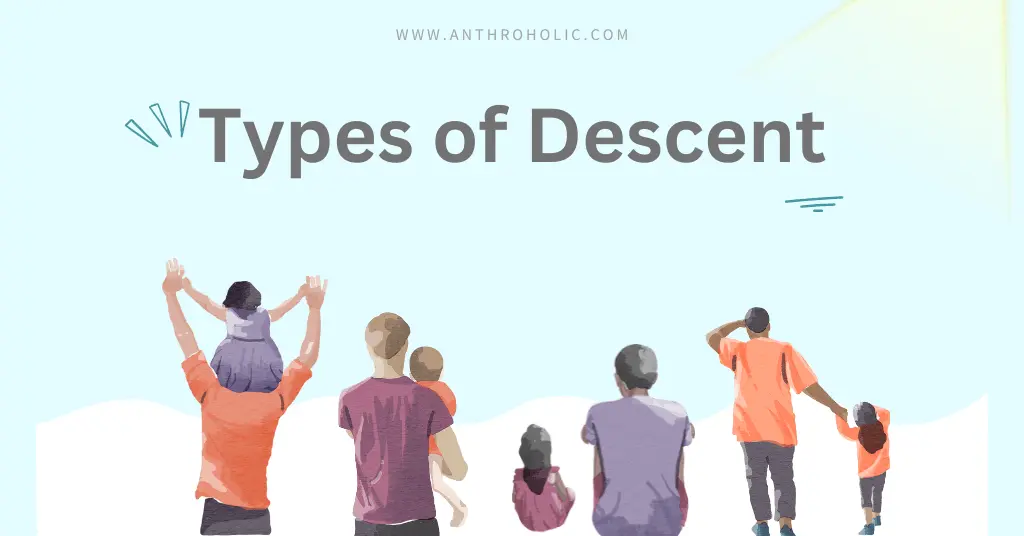AI Answer Evaluation Platform Live Now. Try Free Answer Evaluation Now
Principles and Types of Descent
The study of descent, a concept which is often associated with fields like evolutionary biology, genetics, anthropology, and genealogy, provides a unique lens through which we can examine the intricate tapestry of life. From the smallest genetic variations to vast sociocultural structures, the principles and types of descent encompass a wide spectrum of phenomena. This fundamental concept, at its very core, describes the process by which traits are inherited from parents to offspring, a process that forms the blueprint of life across species.

Descent is a concept that extends beyond the confines of genetics and touches upon the complex systems of lineage that we see in human societies. It can be a measure of our ancestry, tracing back to our earliest forebears, and serves as the mechanism that shapes our identities, both as individuals and as members of larger sociocultural groups.
While the principles of descent can be seen in the simple act of passing on physical traits from one generation to another, it also serves as the basis for the diverse array of kinship structures that form the backbone of societies across the globe. From the patrilineal systems that trace lineage through the father’s side to matrilineal systems that center on the mother’s lineage, and finally, to bilateral systems that incorporate both lines, descent shapes the way we perceive and engage with the world.
Moreover, understanding descent is vital to understanding the theory of evolution, a concept that hinges on the principle of common descent, illustrating the shared ancestry of all living organisms on Earth. From an evolutionary perspective, descent offers insights into how life forms have diverged from a single point of origin through a process of natural selection, creating the remarkable diversity we observe today.
In this article, we delve deep into the principles and types of descent, exploring their meaning, significance, and impact on life as we know it. We will also provide some illustrative case studies to enhance understanding. The aim is to present the subject matter in a manner that is both professional and accessible, ensuring that each concept is thoroughly explained and easy to comprehend. As we embark on this exploration of descent, it is our hope that readers will gain a deeper understanding of the profound ways in which the principles and types of descent shape our world.
The journey of life is intrinsically tied to the mechanisms of descent, a process that has orchestrated the symphony of existence from the earliest epochs of life on Earth to the diverse world we inhabit today. The tapestry of life is woven from the threads of descent, and through understanding this fundamental principle, we can appreciate the complex interplay of forces that have shaped, and continue to shape, the world around us.
Principles of Descent
Genetic Inheritance
The most foundational principle of descent lies in the field of genetics. Genetic inheritance is the process where genetic information is passed from parents to offspring (Ridley, 2004). Genes, made up of DNA, carry the traits that define the characteristics and behavior of an organism. This genetic transfer forms the basis of descent.
Evolutionary Principle
From an evolutionary perspective, all living organisms on earth share a common ancestry. This principle, often referred to as the principle of common descent, suggests that life originated from a common ancestor and diversified over time due to the process of natural selection (Darwin, 1859).
Genealogical Descent
In genealogy and anthropology, the principle of descent is used to trace family histories and relationships. It involves a linear transfer of traits, names, titles, or property from one generation to another (Agarwal, 1994).
Types of Descent
Descent systems form the basis of kinship structures and inheritance patterns in human societies. There are primarily three types of descent: patrilineal, matrilineal, and bilateral.
Patrilineal Descent
In a patrilineal system, lineage and inheritance are traced through the father’s line. This system is predominant in many societies globally, and it often involves the transfer of property, titles, or family names from father to son (Keesing, 1998).
Case Study: The royal families in Europe, particularly in England, follow a patrilineal descent system. The British monarchy has a male-preference cognatic primogeniture, which means that the eldest son usually inherits the throne.
Matrilineal Descent
On the contrary, a matrilineal descent system traces lineage and inheritance through the mother’s line. This system, while less common globally, can be found in certain societies, where the property, name, or titles are transferred from mother to daughter (Keesing, 1998).
Case Study: The Minangkabau people of West Sumatra, Indonesia, are known for their matrilineal descent system. Here, property and land are inherited through female lineage, and the family’s core is formed around the mother’s relatives.
Bilateral Descent
In a bilateral descent system, lineage and inheritance are traced through both the father’s and mother’s lines. This type of descent is common in many modern societies where laws of inheritance are egalitarian, considering both paternal and maternal lines (Keesing, 1998).
Case Study: In the United States, a person’s lineage is recognized through both the mother’s and father’s ancestry. This is reflected in the naming practice where individuals typically carry their father’s last name and mother’s maiden name as a middle name.
Conclusion
The concept of descent is central to understanding inheritance patterns, evolution, genealogy, and social structures. It forms the bedrock of biological diversity and cultural continuity across generations. The principle of descent underscores the importance of understanding the past to appreciate the present and anticipate the future.
Suggested Articles
| What is Descent? | Bilateral Descent | Matrilineal Descent |
| Ambilineal Descent | Double Descent | Patrilineal Descent |
| Descent Groups | Descent and Alliance | Unilineal Descent |
References
- Agarwal, B. (1994). A Field of One’s Own: Gender and Land Rights in South Asia. Cambridge University Press. https://www.academia.edu/72863626/A_Field_of_Ones_Own_Gender_and_Land_Rights_in_South_Asia_by_Bina_Agarwal
- Darwin, C. (1859). On the Origin of Species by Means of Natural Selection. John Murray.
- Keesing, R. M. (1998). Kin Groups and Social Structure. Holt, Rinehart, and Winston.
- Ridley, M. (2004). Evolution (3rd ed.). Blackwell Publishing.



